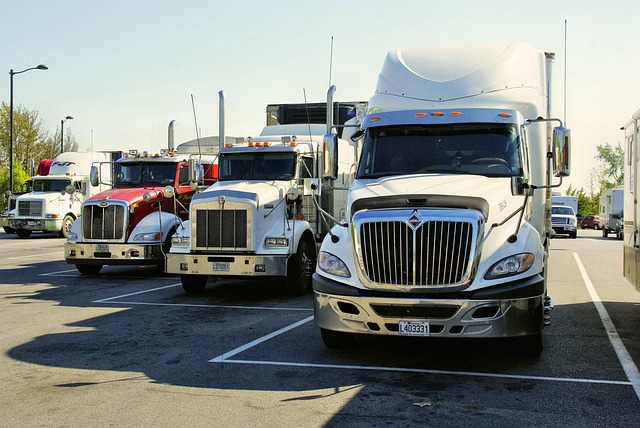Learn how to register your car in California with our comprehensive guide. This step-by-step process covers everything from understanding eligibility requirements and gathering necessary documents for a successful DMV VIN verification to preparing your vehicle for inspection and title transfer. We’ll walk you through the registration process, and share post-registration steps like insurance, tags, and annual renewal. Ensure a smooth experience by following these essential instructions.
- Understand Eligibility Requirements for Car Registration in California
- Gather Necessary Documents for DMV Vin Verification
- Prepare Your Vehicle for Inspection and Title Transfer
- Complete the DMV Registration Process Step-by-Step
- Post-Registration Steps: Insurance, Tags, and Annual Renewal
Understand Eligibility Requirements for Car Registration in California

Before you begin the registration process, it’s crucial to understand the eligibility requirements for car registration in California. To register your vehicle, you must first ensure that it meets the state’s safety and emission standards. All vehicles registered in California must undergo a DMV (Department of Motor Vehicles) vin verification, which includes a comprehensive inspection to check for any defects or violations. This process is designed to keep California’s roads safe by ensuring all vehicles adhere to the necessary safety regulations.
Additionally, your vehicle must have a valid registration from the state where it was previously registered, and you’ll need proof of insurance covering you and your vehicle. The DMV also requires a completed application form, along with the appropriate fees. A mobile vin verifier or app can assist in this step by providing accurate and quick vin inspection results, making the registration process more efficient for both you and the DMV.
Gather Necessary Documents for DMV Vin Verification

Before registering your car in California, it’s crucial to gather all necessary documents for DMV VIN verification. The process typically requires proof of ownership, such as a vehicle title or bill of sale, along with valid identification like a driver’s license. Additionally, you’ll need to provide evidence of insurance and complete the appropriate application forms.
For a smoother process, consider having your vehicle’s VIN inspected or verified by a mobile service. A mobile VIN inspection ensures all details match with the California DMV records, saving you time and potential headaches. This step is especially beneficial if you’re transferring ownership or have recently purchased a used car.
Prepare Your Vehicle for Inspection and Title Transfer

Before you can register your car in California, ensure that your vehicle is prepared for the inspection process. This includes having all necessary documents, such as proof of ownership and insurance, readily available. Your vehicle must also pass a safety and emissions inspection, which typically involves a thorough review of its components by a certified inspector. One crucial step is to obtain a valid Vehicle Identification Number (VIN) verification from the DMV or through a reliable mobile VIN verifier service. This process ensures that your car’s details match the records, enhancing the efficiency of the registration.
Additionally, ensure your vehicle meets all California emissions standards, as failure in this area could delay the registration. The state offers various options for inspection, including specialized facilities and, in some cases, mobile VIN inspectors who can perform a remote verification of your car’s VIN to streamline the title transfer process. This modern approach, often facilitated by innovative mobile vin verifier apps, simplifies what was once a cumbersome task, making it easier for you to complete your car registration smoothly.
Complete the DMV Registration Process Step-by-Step

To complete the DMV registration process for a car in California, follow these straightforward steps:
1. Gather all required documents, including your vehicle’s registration from the previous owner, proof of insurance, and a valid driver’s license. Additionally, you’ll need to undergo a DMV VIN verification, which is crucial for ensuring the vehicle’s history and identifying any potential issues. For convenience, consider using a mobile vin inspection service that can perform this step on-site or remotely, streamlining your registration experience.
2. Visit a local California Department of Motor Vehicles (DMV) field office or apply online if eligible. If visiting in person, be prepared to wait as these offices can get busy. During the registration process, you’ll need to provide detailed information about your vehicle, including its make, model, year, and unique VIN number, which can also be quickly verified by a mobile vin verifier for accuracy.
Post-Registration Steps: Insurance, Tags, and Annual Renewal

After successfully registering your vehicle with the California DMV, there are a few key steps to complete before hitting the road legally. One of the most important is ensuring you have the proper insurance coverage for your car. California requires all vehicles to be insured against liability, and you’ll need to provide proof of this during registration and at all times while driving.
Additionally, you’ll need to obtain vehicle tags (license plates) from the DMV. These tags are not just for identification but also serve as a visual reminder that your car has been registered and meets all safety standards. Lastly, remember that your vehicle registration in California needs to be renewed annually. This process typically involves updating any changes in ownership or address and paying the required fees. For added convenience, some residents opt for mobile VIN verification services or even conduct their own vin inspection using readily available tools to streamline this annual renewal process.
Registering a car in California involves understanding eligibility requirements, gathering essential documents for DMV VIN verification, preparing your vehicle for inspection and title transfer, completing a step-by-step registration process, and taking post-registration steps like insuring your vehicle, obtaining tags, and annual renewal. By following these straightforward procedures, you’ll ensure a smooth car registration experience in the Golden State.



